Engineering Mechanics - KOP: Impulse and Momentum
- KOP: Impulse and Momentum - General Questions
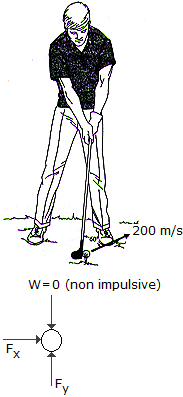
A golf ball having a mass of 40 g is struck such that it has an initial velocity of 200 m/s as shown. Determine the horizontal and vertical components of the impulse given to the ball.
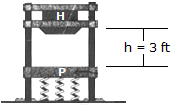
The drop hammer H has a weight of 900 lb and falls from rest. H has a weight of 900 lb and falls from rest h = 3 ft onto a forged anvil plate P that has a weight of 500 lb. The plate is mounted on a set of springs which have a combined stiffness of kT = 500 lb/ft. Determine (a) the velocity of P and H just after collision and (b) the maximum compression in the springs caused by the impact. The coefficient of restitution between the hammer and the plate is e = 0.6. Neglect friction along the vertical guide posts A and B.
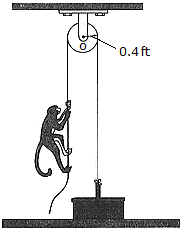
A basket and its contents weigh 10 lb. A 20-lb monkey grabs the other end of the rope and very quickly (almost instantaneously) accelerates by pulling hard on the rope until he is moving with a constant speed of vm/r = 2 ft/s measured relative to the rope. The monkey then continues climbing at this constant rate relative to the rope for 3 seconds. How fast is the basket rising at the end of the 3 seconds? Neglect the mass of the pulley and the rope.
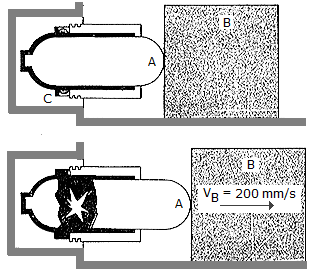
In cases of emergency, the gas actuator can be used to move a 75-kg block B by exploding a charge C near a pressurized cylinder of negligible mass. As a result of the explosion, the cylinder fractures and the released gas forces the front part ofthe cylinder, A, to move B and the floor is  = 0.5, determine the impulse that the actuator must impart to B.
= 0.5, determine the impulse that the actuator must impart to B.
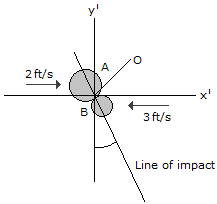
Two coins A and B have the initial velocities shown just before they collide at point O. If they have weights of WA = 13.2(10-3) lb and WB = 6.6(10-3) lb and the surface upon which they slide is smooth, determine their speed just after impact. The coefficient of restitution is e = 0.65.